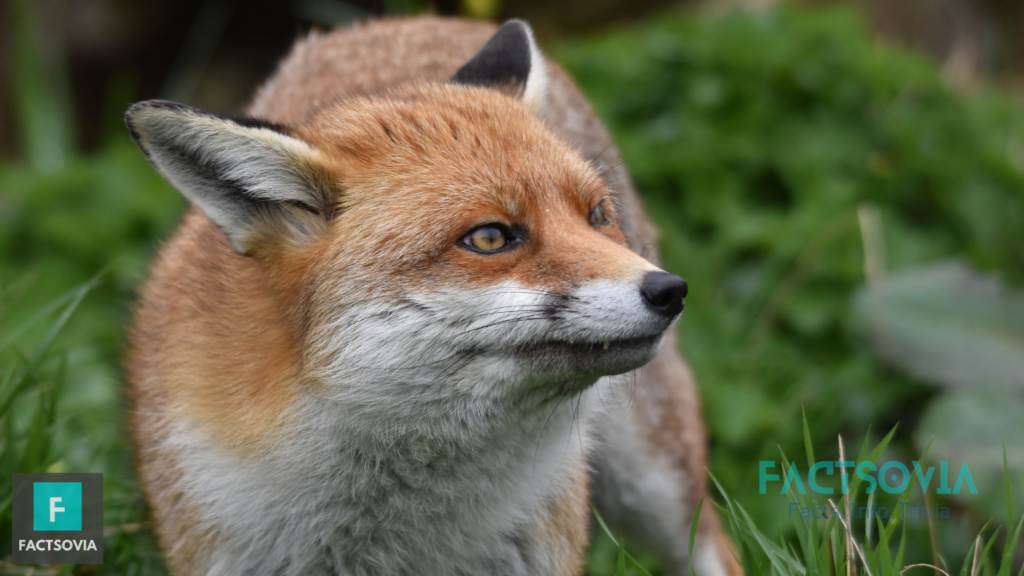We use affiliate links to run our site. When you buy through links on our site, we may earn an affiliate commission, without any added cost to you. Learn more
Foxes are a common sight in many parts of the world. These furry creatures are known for their intelligence and cunning, but what do they eat?
In this article, we will explore the feeding habits of foxes, including different species and their diets, how they hunt and gather food, factors influencing their diet, and the importance of their diet.
A brief about the animal
Foxes belong to the Canidae family, which includes other species such as wolves, coyotes, and domestic dogs. There are 37 species of foxes, with the most common being the red fox.
Foxes are small to medium-sized mammals with bushy tails and pointed ears. They are found in many different habitats, including forests, grasslands, and urban areas.
General Feeding Habits
Foxes are omnivorous, which means they eat both meat and plants. Their diet varies depending on their habitat and the availability of food. In general, foxes are opportunistic feeders, which means they will eat whatever food is available to them.
Their diet can include small mammals such as rodents, rabbits, and squirrels, as well as birds, insects, fruits, and vegetables.
Different species and their Diets
Red Fox
The red fox is the most widespread fox species and is found in almost every habitat type, from deserts to forests. Their diet consists mainly of small mammals, such as rodents, rabbits, and hares, but they also feed on birds, reptiles, amphibians, and insects.
They are also known to scavenge for food, including carrion, fruit, and human refuse.
Arctic Fox
The Arctic fox is found in the tundra regions of the Arctic Circle, and their diet consists mainly of lemmings, which are small rodents. They also feed on other small mammals, birds, and fish, and they are known to scavenge for food, including carrion and human refuse.
Grey Fox
The grey fox is found in North and Central America and is one of the few fox species that can climb trees. Their diet consists mainly of small mammals, such as rodents and rabbits, but they also feed on birds, reptiles, amphibians, and insects. They are also known to consume fruit and nuts.
Fennec Fox
The fennec fox is found in the deserts of North Africa and their diet consists mainly of insects, small mammals, and birds. They are also known to consume fruit and eggs.
Swift Fox
The swift fox is found in the grasslands of North America, and their diet consists mainly of small mammals, such as rodents and rabbits. They also feed on birds, reptiles, and insects.
How they Hunt and Gather Food

Foxes use a combination of hunting and scavenging to gather food. They have excellent senses of sight, smell, and hearing, which they use to locate prey. Foxes are also skilled hunters, using their agility and speed to catch prey such as rabbits and birds.
In addition to hunting, foxes will scavenge for food. They are known to raid garbage cans and steal food from bird feeders. Foxes are also attracted to areas where humans feed wild animals, such as campgrounds and picnic areas.
Factors Influencing their Diet
The diet of foxes is influenced by several factors, including their habitat, the availability of food, and the time of year. In areas where prey is scarce, foxes will feed on plants and insects.
During the winter months, when prey is scarce, foxes will rely on stored food and will sometimes eat carrion.
The Importance of Their Diet
The diet of foxes is important for several reasons. First, foxes play an important role in controlling populations of small mammals such as rodents.
This helps to maintain the balance of ecosystems. Second, foxes are important prey for larger predators such as wolves and coyotes.
Human Interaction and Diet
Foxes have adapted to living in close proximity to humans and have learned to take advantage of human resources. This includes raiding garbage cans and stealing food from bird feeders. While foxes are generally not a threat to humans, they can carry diseases such as rabies.
Conclusion
Foxes are omnivorous animals that eat both meat and plants. Their diet varies depending on their habitat and the availability of food.
Foxes are skilled hunters and scavengers, and their diet is influenced by several factors, including their habitat and the time of year.
The diet of foxes is important for maintaining the balance of ecosystems and providing food for larger predators. However, human interaction with foxes can lead to problems such as the spread of disease and the disruption of ecosystems.
FAQs
What do foxes eat in the winter?
During the winter months, foxes will rely on stored food and will sometimes eat carrion. They may also feed on plants and insects if prey is scarce.
Do foxes only eat meat?
No, foxes are omnivores and eat both meat and plants. Their diet varies depending on their habitat and the availability of food.
Can foxes be dangerous to humans?
Foxes are generally not a threat to humans. However, they can carry diseases such as rabies, so it is important to avoid contact with them.
What do foxes hunt?
Foxes hunt a variety of small mammals such as rodents, rabbits, and squirrels, as well as birds and insects.
How do foxes find food?
Foxes use their senses of sight, smell, and hearing to locate prey. They are also skilled hunters, using their agility and speed to catch prey. In addition to hunting, foxes will scavenge for food and are attracted to areas where humans feed wild animals.
Amazon and the Amazon logo are trademarks of Amazon.com, Inc, or its affiliates.
